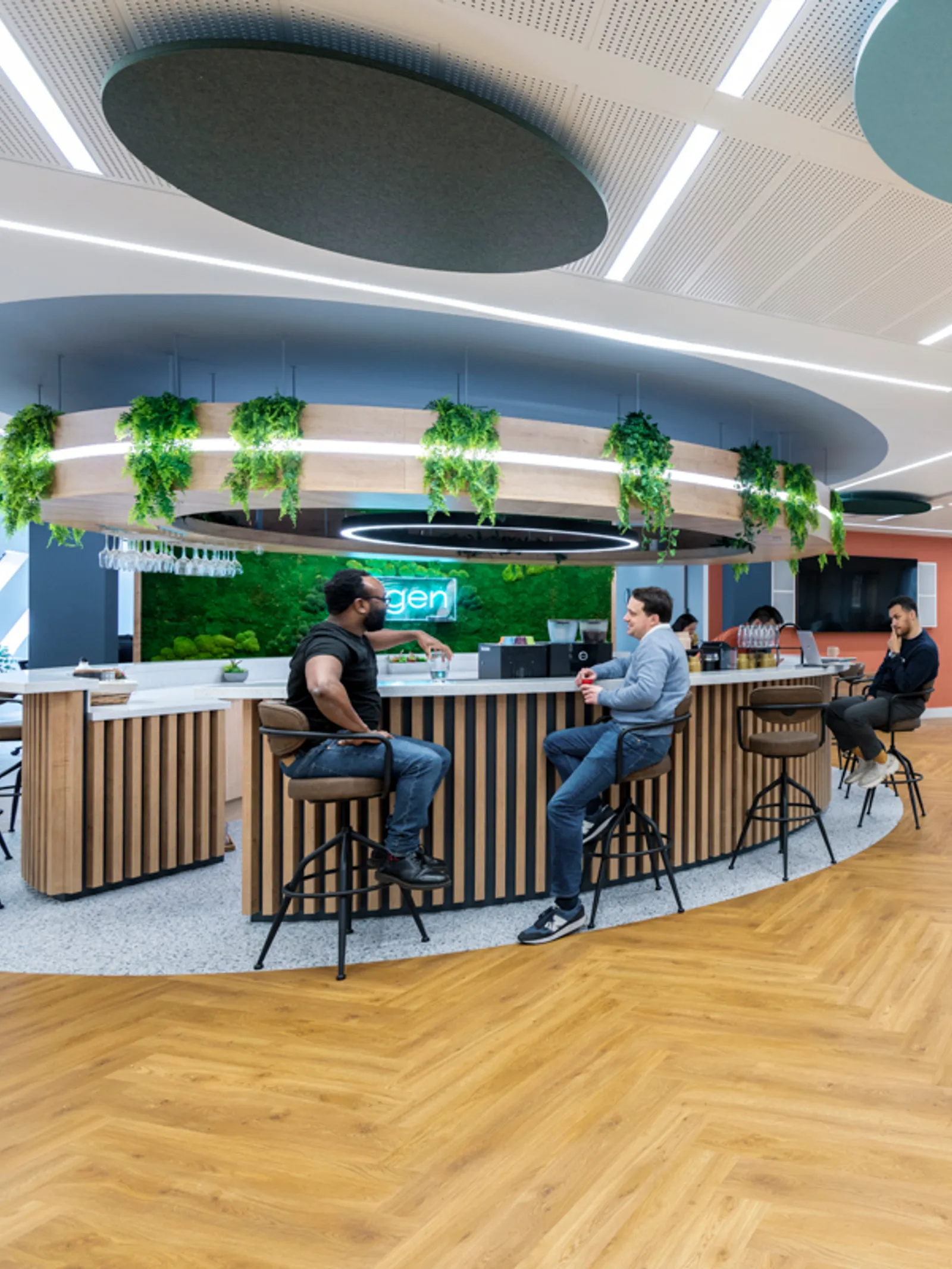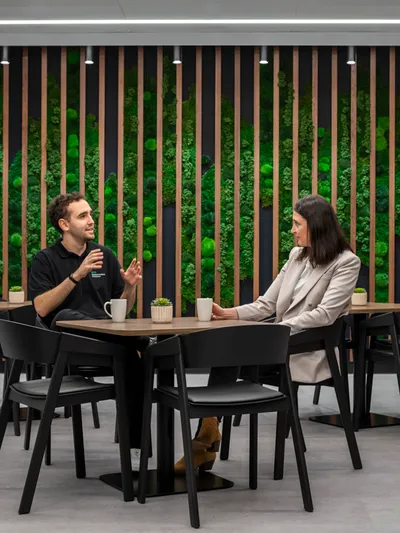As the world grapples with the escalating consequences of climate change, businesses are recognising the urgent need to adopt sustainable practices. This transformation extends beyond token gestures and increasingly encompasses all aspects of operations, including office design.
Navigating the path to a greener, sustainable workplace
A sustainable office prioritises environmental sensitivity and resource conservation throughout its lifecycle. It's a space that not only minimises its ecological footprint but also promotes the wellbeing of its occupants. Businesses that embrace sustainable office design can reap a multitude of benefits, including reduced energy consumption and costs, improved employee health and productivity, enhanced brand reputation, and compliance with environmental regulations.
The business case for sustainability
The transition to a sustainable office is not merely a moral imperative; it also presents a compelling business case. By embracing eco-friendly practices, businesses can benefit from:
Reduced energy consumption and costs
Sustainable office designs incorporate energy-efficient appliances, lighting systems, and HVAC controls, leading to significant reductions in energy consumption and associated costs.
A study by the U.S. Department of Energy found that energy-efficient buildings can save businesses up to 30% on their energy bills.
Improved employee health and productivity
A healthy and comfortable work environment can boost employee morale, productivity, and retention rates, positively impacting the bottom line. A study by the World Green Building Council found that employees in green buildings are 16% more productive and have a 15% higher rate of job satisfaction.
Enhanced brand reputation
Businesses that demonstrate a commitment to sustainability can enhance their brand image and attract environmentally conscious customers and partners. A study by Nielsen found that 73% of consumers are willing to pay more for products and services that come from companies committed to sustainability.
Compliance with environmental regulations
As stringent environmental regulations become more prevalent, businesses that adopt sustainable practices are better positioned to comply and avoid potential penalties.
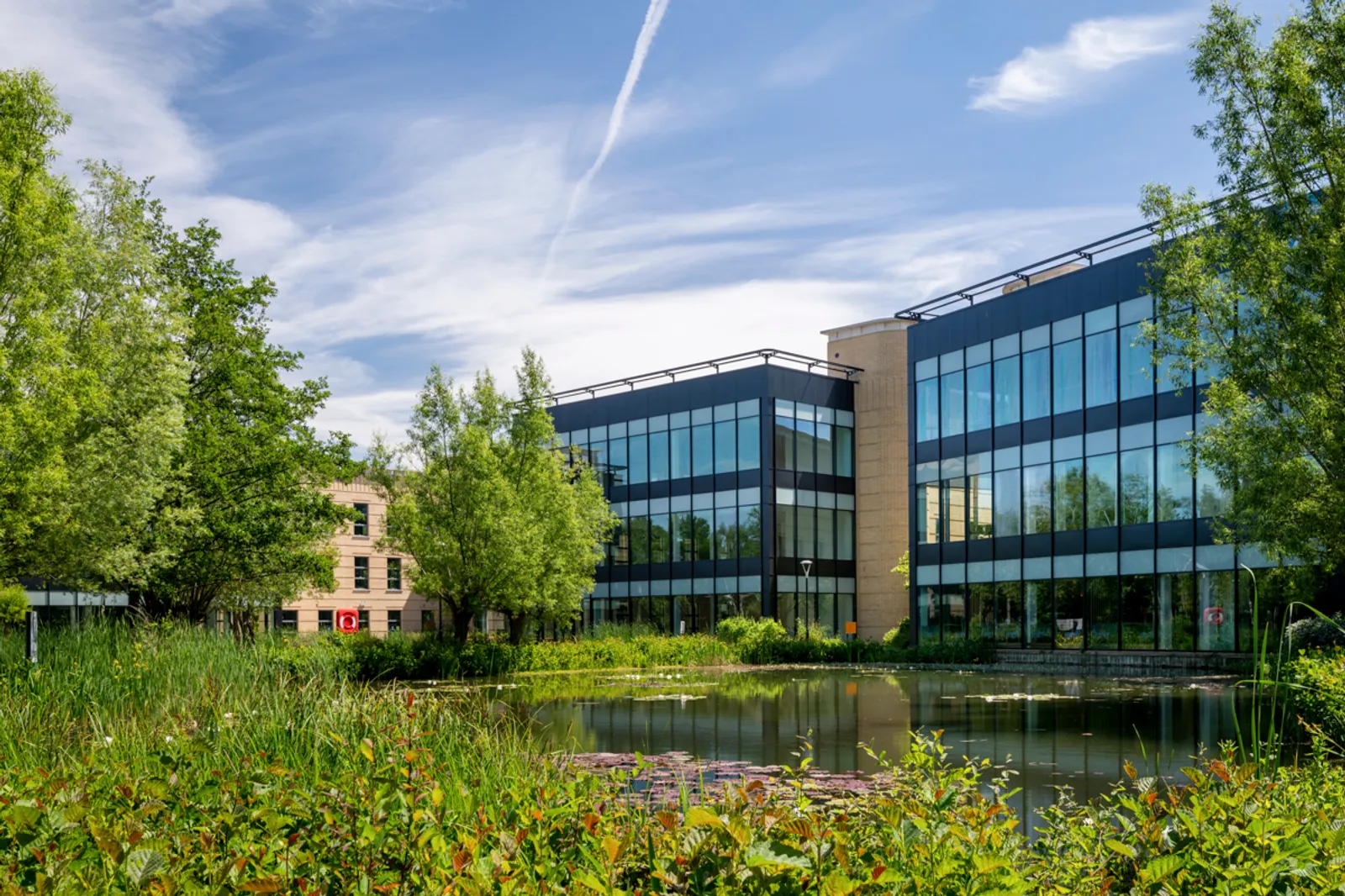
Embracing sustainable design principles
The journey towards a sustainable office begins with a comprehensive understanding of the principles that underpin this approach. These principles serve as guiding lights for creating an environmentally responsible workspace.
Prioritise natural light: Natural light not only reduces the need for artificial lighting but also improves employee well-being and productivity. One study found that workers in offices with natural light enjoyed increased cognitive performance, higher job satisfaction and lower levels of eye strain.
Utilise sustainable materials: Opt for building materials and furnishings made from recycled or renewable resources, such as FSC-certified wood and recycled metal. Recycled materials reduce the demand for virgin resources, while renewable resources can be replenished naturally.
Implement energy-efficient systems: Install energy-efficient lighting, appliances, and HVAC systems to minimise energy consumption and reduce carbon emissions. Energy-efficient lighting reduces the demand for electricity, while energy-efficient appliances and HVAC systems consume less energy for the same level of performance.
Conserve water: Implement water-saving measures, such as low-flow fixtures and rainwater harvesting systems, to conserve this precious resource. Low-flow fixtures reduce water consumption without compromising functionality, while rainwater harvesting systems collect and utilise rainwater for non-potable purposes, such as toilet flushing and irrigation.
Incorporate sustainable practices: Encourage recycling, composting, and investing in reusable items to minimise waste and promote circularity. Recycling and composting divert waste from landfills, while reusable items reduce the need for disposable products.
Strategies for sustainable office design
Translating sustainable design principles into tangible actions requires a strategic approach that encompasses various aspects of the office environment.
Space planning and layout
Designing an efficient and sustainable office layout requires careful consideration of how space can be used, work styles, and the use of natural light. Businesses can optimise their office space, promote employee productivity, and reduce their environmental impact by implementing strategic space planning strategies.
Optimise space utilisation
Conduct a space audit: Conduct a thorough space audit to assess how the office space is currently used. Identify underutilised areas, such as unused conference rooms, empty workstations, or common areas.
Consider reorganising or downsizing: Based on the space audit findings, consider reorganising the office layout to make better use of existing space. This may involve relocating departments, consolidating workstations, or downsizing the overall office footprint if underutilisation is significant.
Implement multifunctional spaces: Designate multipurpose spaces that can serve multiple functions, such as flexible meeting rooms that can be transformed into quiet workspaces or collaborative areas.
Employ flexible workspaces
Create a mix of open-plan areas: Incorporate open-plan areas to foster collaboration, communication, and a sense of community among employees. Open-plan spaces can also encourage movement and interaction, promoting a more active and healthy work environment.
Provide private offices: Alongside open-plan areas, provide private offices or quiet workspaces for employees who require individual focus and concentration. These spaces can be designed to minimise distractions and allow for focused work.
Establish collaborative spaces: Create dedicated, collaborative workspaces equipped with comfortable seating, writable walls, and presentation tools. These spaces can accommodate brainstorming sessions, team meetings, and informal discussions.
Promote natural light penetration
Maximise window areas: Maximise window areas to allow for ample natural light penetration. This reduces the reliance on artificial lighting, saves energy, and creates a more natural and inviting work environment.
Utilise light-reflective surfaces: Incorporate light-reflective surfaces, such as light-coloured walls, ceilings, and furniture, to enhance natural light distribution and further reduce the need for artificial lighting.
Consider strategic placement of furnishings: Position desks and furniture to avoid blocking natural light from windows. Consider using transparent or translucent partitions to allow natural light to flow through the office.
By optimising space utilisation, employing flexible workspaces, and promoting natural light penetration, businesses can create a more efficient, productive, and sustainable office environment that caters to the diverse needs of their employees.
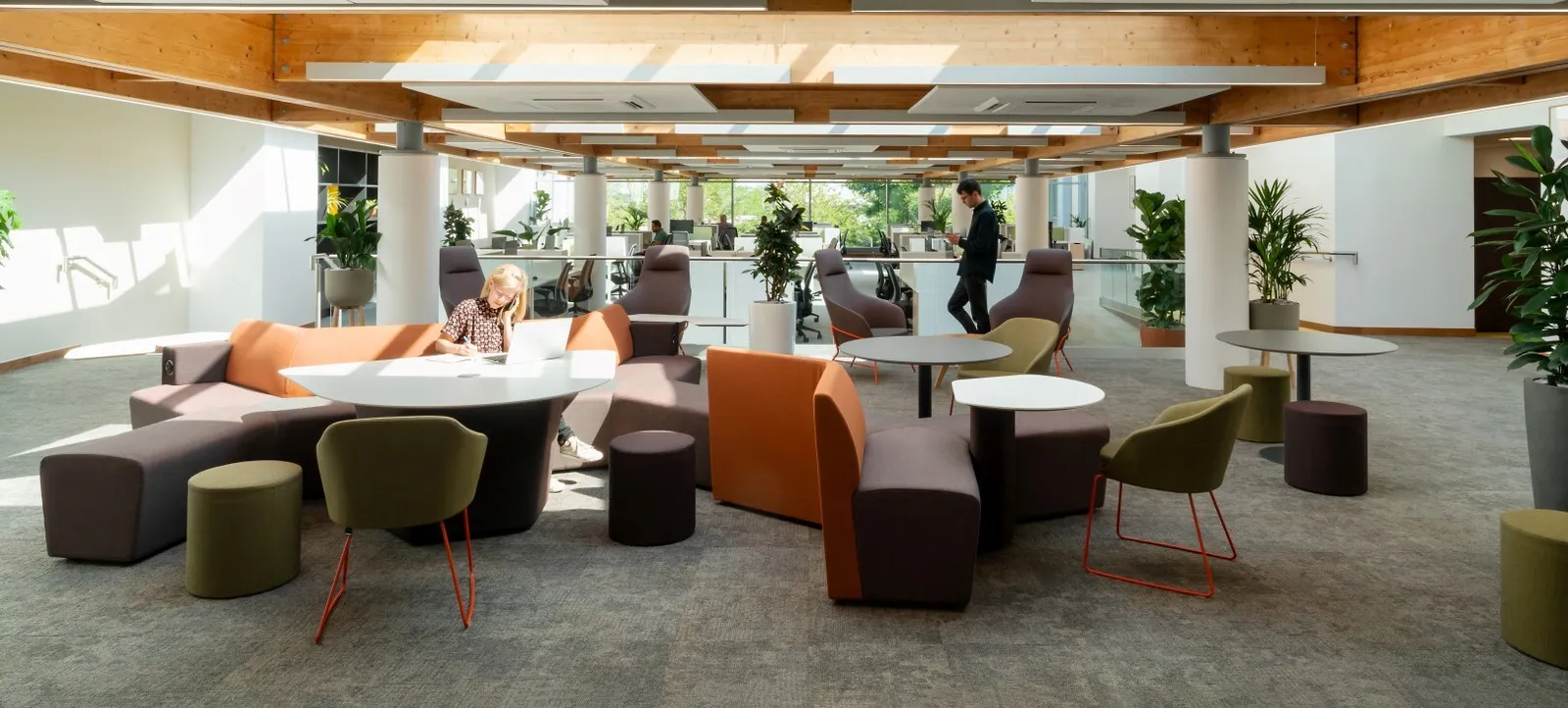
Material selection and construction
Utilise sustainable materials
Reduce demand for virgin resources with recycled materials: Using recycled materials wherever possible, during both construction and when it comes to furnishing the office, helps to extend the lifecycle of existing materials and reduces the demand for the production of new ones.
Embrace renewable resources: Choosing building materials and furnishings made from renewable resources that can be replenished naturally will help to lower the carbon footprint of the office.
Choose Low-VOC paints: Conventional paints often contain volatile organic compounds (VOCs), which can emit harmful fumes that contribute to indoor air pollution. Select low-VOC or VOC-free paints to create a healthier and more environmentally friendly work environment.
Inquire about the environmental impact of materials
Consider embodied energy: Embodied energy refers to the total energy required to extract, process, transport, and install a material. Research the embodied energy of different materials to make informed choices that minimise the overall energy footprint of the office.
Evaluate transportation emissions: Transportation of materials can significantly contribute to greenhouse gas emissions. Prioritise locally sourced materials whenever possible to reduce transportation distances and associated emissions.
Support sustainable practices: Choose materials from manufacturers and suppliers who demonstrate commitment to sustainable practices, such as responsible forestry practices for wood products and environmentally friendly manufacturing processes, and buy locally where possible.
By adopting these sustainable material selection practices, businesses can minimise the environmental impact of their office construction and furnishings, contribute to a more sustainable future, and support the local economy.
Energy efficiency and conservation
Implement energy-efficient lighting systems
Replace traditional incandescent and fluorescent bulbs with energy-efficient LED Lighting: LED bulbs consume significantly less energy than conventional incandescent and fluorescent bulbs, leading to substantial reductions in electricity consumption. They also have a longer lifespan, reducing the need for frequent replacements.
Utilise smart HVAC controls to regulate temperature and ventilation
Install occupancy sensors and programmable thermostats: Occupancy sensors automatically turn off lights when a space is unoccupied, preventing unnecessary energy waste. Programmable thermostats allow for precise control of heating and cooling schedules, optimising energy usage and ensuring a comfortable indoor environment.
Implement demand-based ventilation systems: Demand-based ventilation systems adjust the ventilation rate based on occupancy levels and air quality, reducing energy consumption without compromising indoor air quality.
Implement energy-saving appliances and electronics with ENERGY STAR ratings
Enable energy-saving settings on electronics: Many electronics, such as computers and monitors, have power-saving modes that can reduce energy consumption when not in use. Encourage employees to enable these settings and power down electronics when not in use.
Choose energy star certified appliances: ENERGY STAR certified appliances meet strict energy efficiency standards, ensuring that they consume less energy without compromising performance. Look for the ENERGY STAR label when purchasing appliances for the office, such as refrigerators, dishwashers, and printers.
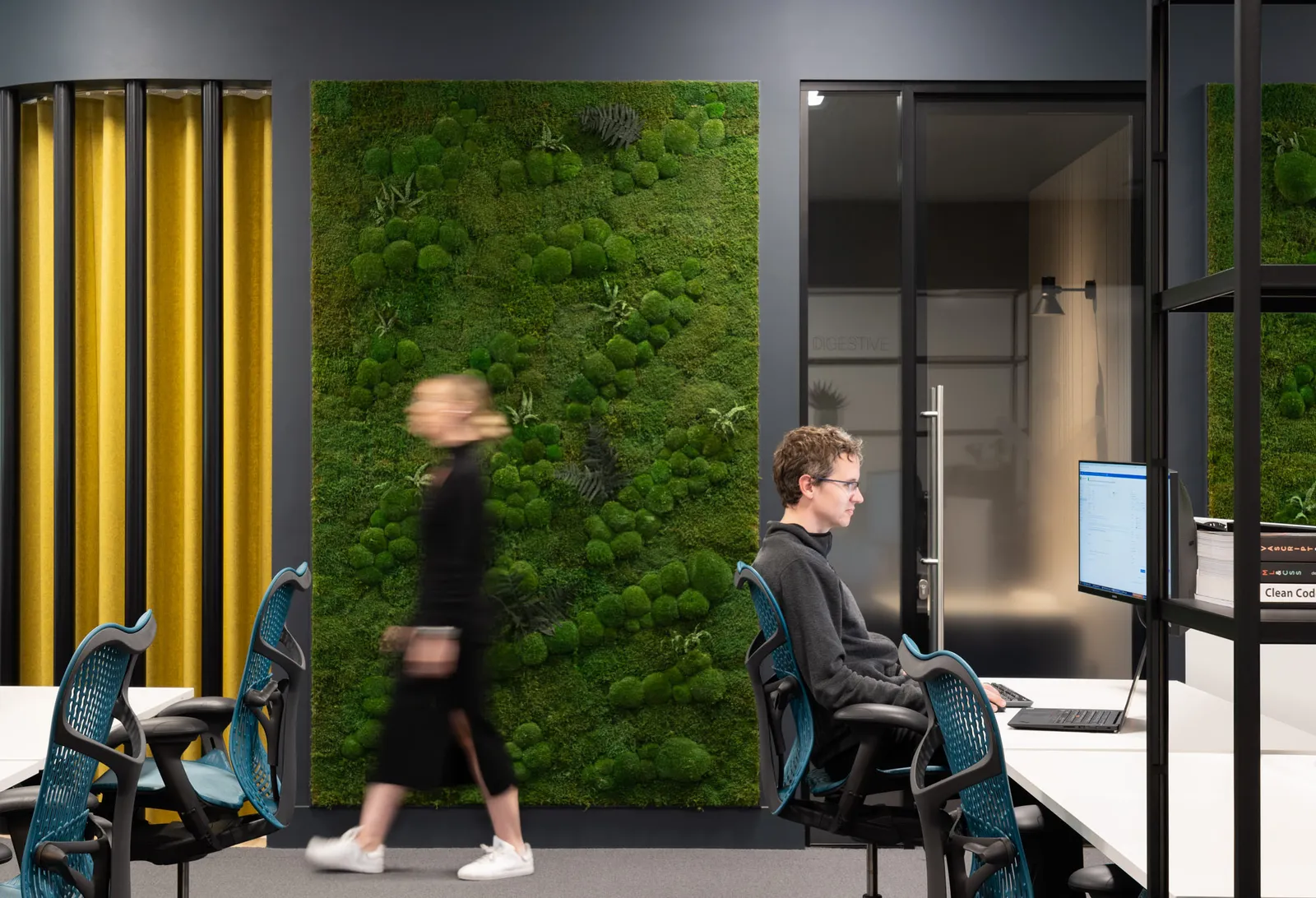
Water conservation and management
Install low-flow plumbing fixtures
Replace standard faucets with low-flow fixtures: Low-flow faucets restrict the flow of water without compromising functionality, significantly reducing water consumption. Choose faucets with aerators, which mix water with air to create a more forceful stream while using less water.
Upgrade to low-flow toilets: Conventional toilets consume a significant amount of water, accounting for a substantial portion of office water usage. Replacing traditional toilets with high-efficiency, low-flow models can dramatically reduce water consumption without compromising performance. Look for toilets with the WaterSense label, which indicates that they meet strict water efficiency standards.
Implement rainwater harvesting systems
Collect rainwater for non-potable uses: Rainwater harvesting systems collect rainwater from rooftops and store it in tanks or cisterns. This collected rainwater can then be utilised for non-potable purposes, such as toilet flushing, irrigation of landscaping, and cleaning. Rainwater harvesting can significantly reduce the reliance on municipal water supplies, conserving this precious resource.
Implement regular leak detection and maintenance
Establish a preventive maintenance program: Regularly inspect plumbing fixtures, pipes, and water-using appliances for leaks. Leaks can go unnoticed for extended periods, leading to significant water wastage. Promptly address any leaks identified to minimise water loss.
Install leak detection systems: Consider installing leak detection systems that can automatically detect and alert responsible personnel of potential leaks, enabling prompt action to prevent water loss.
By implementing these water conservation measures, businesses can significantly reduce their water consumption, lower their water bills, and contribute to the preservation of this vital resource.
Waste reduction and recycling
Implement comprehensive recycling and composting programs
Establish clearly defined waste streams: Designate separate waste receptacles for different waste streams, such as paper, plastic, metal, glass, and food scraps. Clearly label each receptacle to ensure proper waste segregation.
Partner with reputable recycling and composting companies: Collaborate with reputable recycling and composting service providers to ensure that collected waste is handled responsibly and recycled or composted according to industry standards.
Educate employees on waste segregation: Provide regular training and awareness programs to educate employees about proper waste segregation and the importance of recycling and composting.
Provide designated waste collection areas
Designate convenient waste collection points: Strategically place waste receptacles throughout the office to make it easy for employees to dispose of waste properly.
Ensure accessibility for all: Place waste receptacles in easily accessible locations, considering the needs of employees with disabilities.
Maintain clean and organised waste collection areas: Regularly clean and maintain waste collection areas to prevent unpleasant odours and maintain a hygienic work environment.
Encourage the use of reusable items
Promote reusable water bottles: Provide access to filtered water fountains and encourage employees to bring reusable water bottles to reduce the use of disposable plastic cups and bottles.
Offer reusable mugs and utensils: Replace disposable cups and utensils with reusable mugs, plates, and cutlery. Encourage employees to use these reusable items in the office kitchen and break rooms.
Implement reusable bag programs: Encourage employees to bring reusable shopping bags to the office to reduce the use of disposable plastic bags. Consider offering branded reusable bags as a promotional item.
By implementing these waste reduction and recycling measures, businesses can significantly minimise their environmental impact, reduce landfill waste, and promote a culture of sustainability within the workplace.
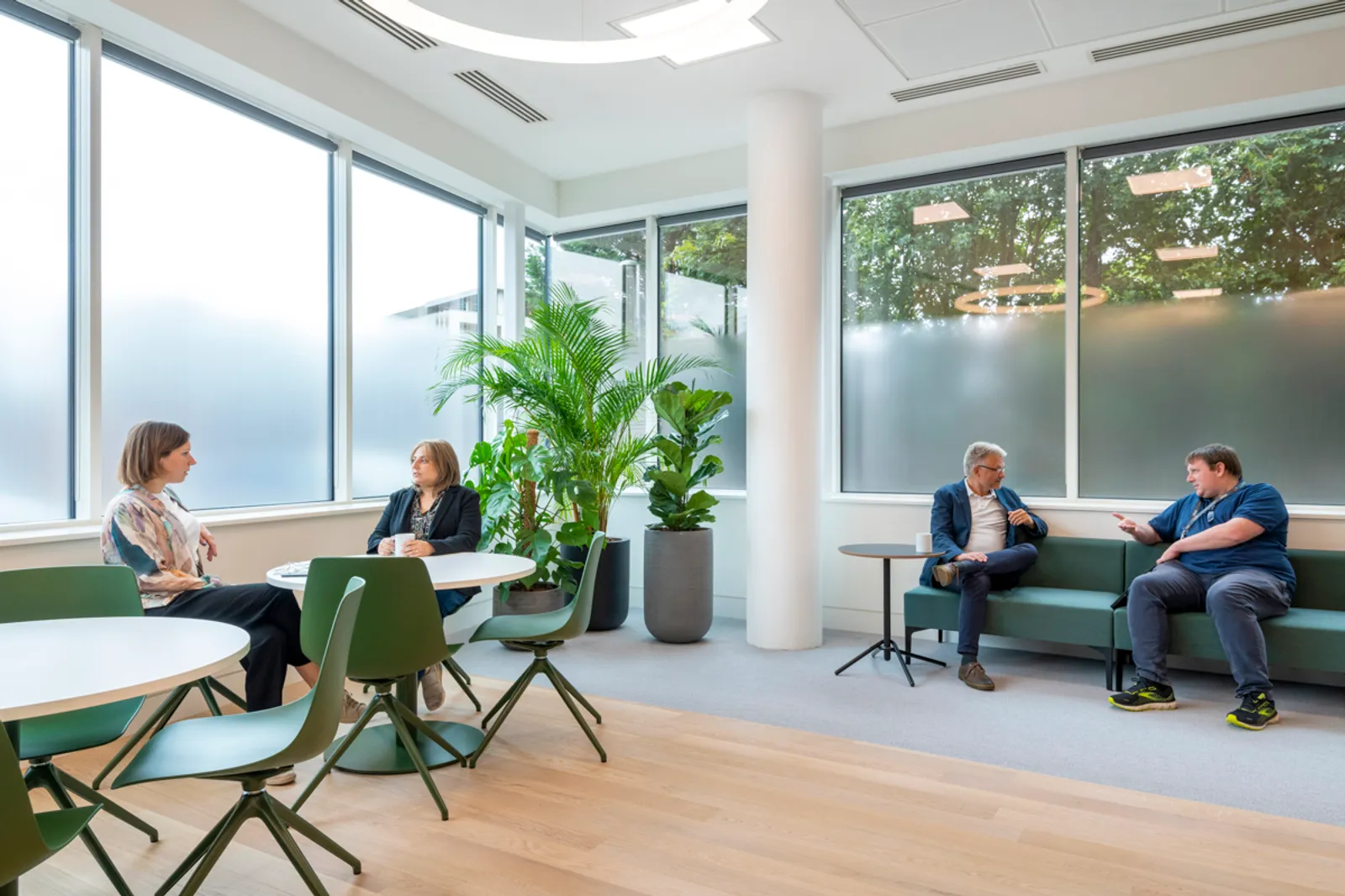
Measuring and reporting on sustainability
To ensure that sustainable practices are effectively implemented and achieve the desired outcomes, businesses should establish clear metrics and regularly assess their progress.
This involves:
Tracking energy consumption: Monitor energy usage through smart metres and analyse trends to identify areas for improvement.
Measuring water consumption: Monitor water usage through water metres and implement measures to reduce consumption.
Tracking waste generation: Monitor waste generation and analyse the composition of waste streams to identify opportunities for recycling and composting.
Conducting employee surveys: Gauge employee satisfaction with the sustainable office environment and gather feedback for continuous improvement.
By diligently measuring and reporting on sustainability performance, businesses can demonstrate their commitment to environmental responsibility and track the effectiveness of their initiatives.
Start your journey towards a more sustainable business with Area today
Designing a sustainable office is not a one-time endeavour; it's an ongoing process that requires dedication, collaboration, and a commitment to continuous improvement. By adopting sustainable design principles, implementing energy-efficient practices, and prioritising waste reduction, businesses can create a healthier, more productive work environment while minimising their environmental impact.
At Area, we realise that designing a sustainable office may seem like a huge challenge. We offer an extensive range of sustainable, creative office fit out and design services. Get in touch with our expert team to discuss your goals, and to discover how we can help.

